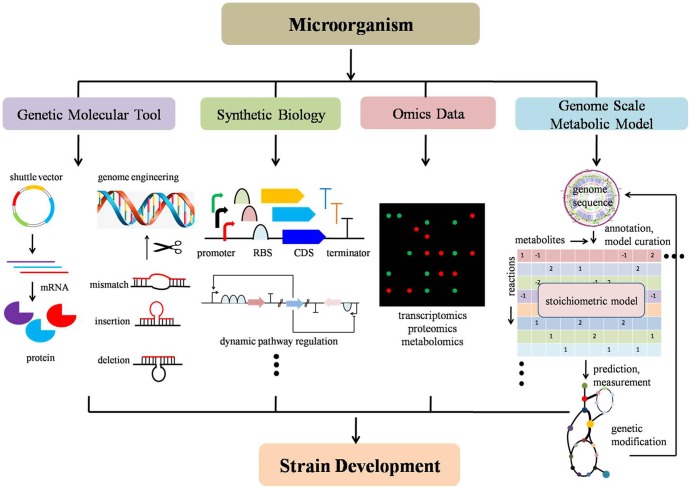FIGURE 2.
Schematic strategies and techniques for non-model microorganism development. From left to right: (a) genetic molecular tools include building shuttle vectors, genome engineering toolkit, etc; (b) synthetic biology contains modularization of functional biological parts, such as a promoter, ribosome binding site, coding sequence, metabolic biosensors, etc; (c) omics data harbors intracellular high-throughput information, such as transcriptomics, proteomics, metabolomics; (d) genome-scale metabolic model guided strain design to improve target chemical production by predicting a potential gene knock-out, amplification and heterologous expression of foreign pathway genes in a build-test-design manner. Strain development can include improvement targeted chemical production (titer, yield, and rate) or improved sugar utilization (i.e., xylose and pentose).

